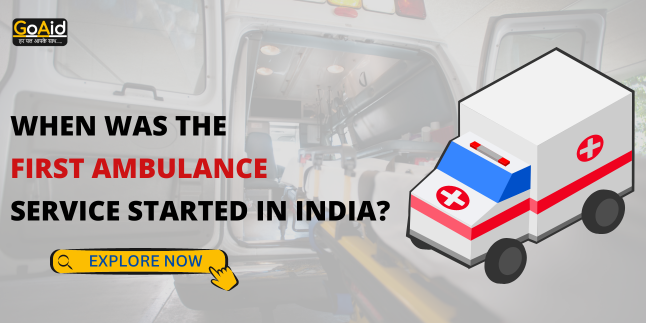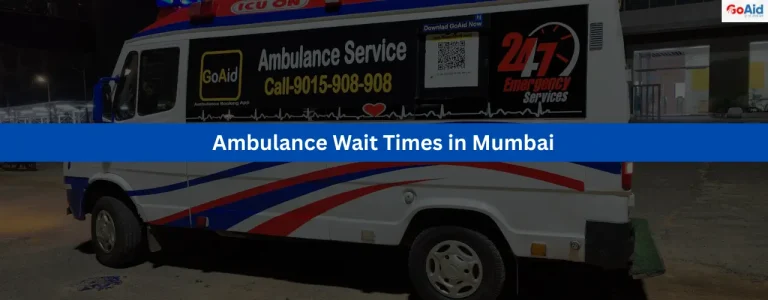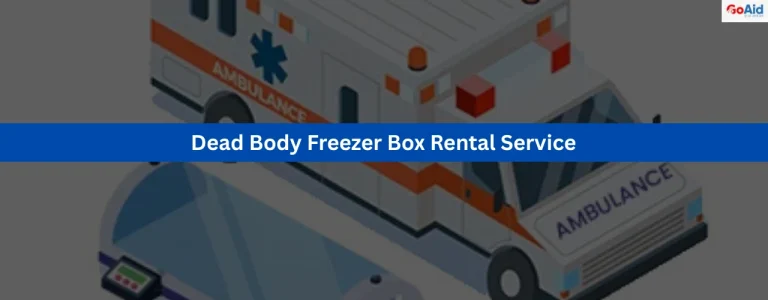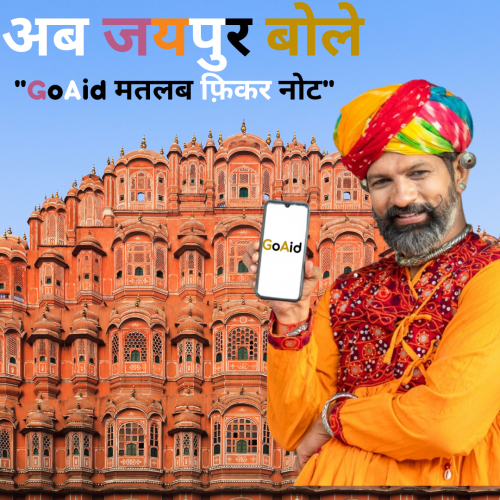First Ambulance Service Started in India: Emergencies can strike without warning, and swift access to medical assistance can make all the difference between life and death. In the vast tapestry of India’s history, there stands a pivotal moment when the nation took a momentous step towards ensuring rapid medical aid during crises.
This blog explores the origins, evolution, and impact of India’s first ambulance service, a groundbreaking initiative catalyzed by the visionary philanthropist, Jamsetji Tata. From its humble beginnings ambulance in Mumbai over a century ago to the modern state of emergency healthcare services today.
If you are similarly interested to know about ŌĆ£First Ambulance Service Started in IndiaŌĆØ, then read this blog till the end to get this mystery resolved.
So, letŌĆÖs start-
Historical Context Related to Ambulance Service in India
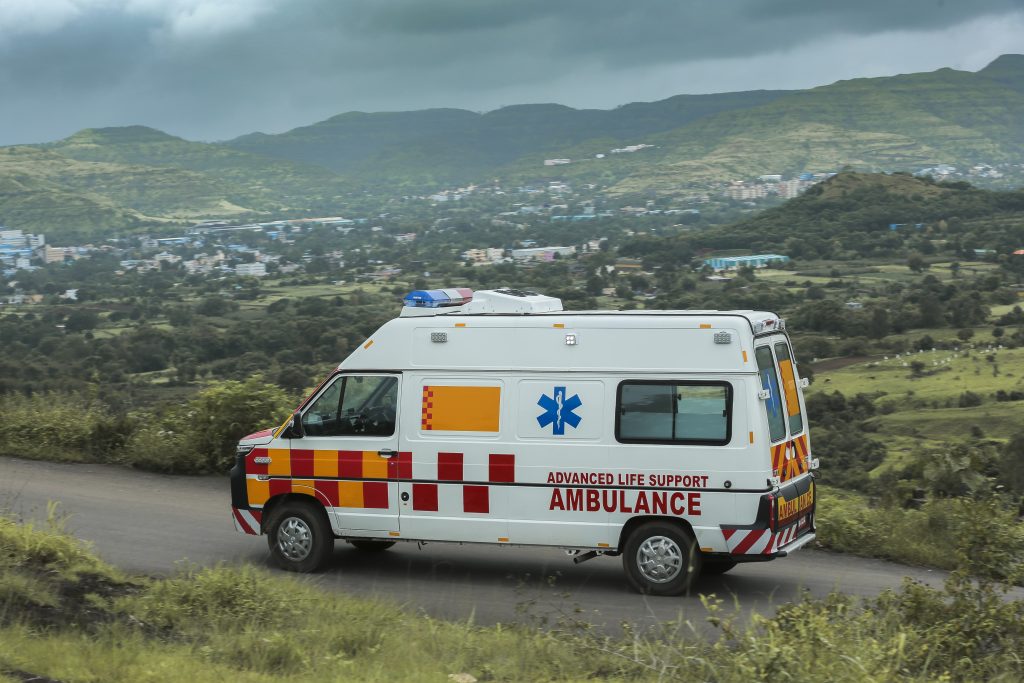
The Historical context of the journey of our first-ever ambulance service for the general public in India, has gone through many hurdles. To understand the significance of India’s first ambulance service, it’s essential to consider the historical context surrounding healthcare and emergency services during the late 19th and early 20th centuries in colonial India.
- Colonial Era Neglect: Under British colonial rule, the focus was primarily on the economic exploitation of India rather than the welfare of its people. Healthcare infrastructure was largely insufficient, and access to medical care for the general Indian population was severely limited.
- Transportation Challenges: India’s vast and diverse geography presented significant challenges for transporting the sick and injured. Poorly maintained roads and long distances hindered the swift movement of patients to medical facilities.
- Limited Awareness and Resources: There was a general lack of awareness about the importance of timely medical attention, and traditional methods of transporting the sick were often slow and inefficient.
- Philanthropic Initiatives: Against this backdrop, philanthropists like Jamsetji Tata recognized the dire need for a dedicated ambulance service to bridge the gap in healthcare accessibility. His vision laid the foundation for India’s first ambulance service, which aimed to provide rapid medical aid to those in need.
Also Read: 10 reasons to choose GoAid Ambulance for your medical transport
When was the first ambulance service started in India?
The inception of India’s first ambulance service was a transformative moment in the nation’s healthcare history. It marked a significant step towards providing swift medical assistance during emergencies. So, when exactly did this pioneering initiative begin?
India’s first ambulance service was launched in the bustling city of Mumbai, then known as Bombay, in the year 1902. The visionary philanthropist behind this noble endeavor was none other than Jamsetji Tata, the founder of the Tata Group, a prominent industrialist, and a staunch advocate for social welfare.
This historic undertaking started with horse-drawn carriages adapted to serve as ambulances. These carriages were equipped with rudimentary medical equipment and staffed with trained personnel who could respond rapidly to medical emergencies. The service aimed to address the pressing need for timely healthcare access in a rapidly growing urban center like Bombay.
Also Read: How to Choose the Right Ambulance Service for Your Medical Needs
The Visionary Philanthropist: Jamsetji Tata
Behind the establishment of India’s first ambulance service lies the remarkable story of a visionary philanthropist, Jamsetji Tata. Born on March 3, 1839, in Navsari, Gujarat, Jamsetji Tata would go on to become one of India’s most loved, respected & influential industrialists with a champion of social welfare.
- Early Life and Entrepreneurship: Jamsetji Tata’s journey began with his foray into his family’s textile business. However, he had grander ambitions. In 1868, he founded the Tata Group, which would later become one of India’s largest and most respected industrial conglomerates. His ventures spanned various industries, from steel to energy to hospitality.
- Commitment to Education: Tata’s vision extended beyond business. He believed in the power of education and established the J.N. Tata Endowment in 1892, offering scholarships to Indian students to pursue higher education abroad. This initiative aimed to nurture future leaders and thinkers.
- Founding Institutions: Tata’s commitment to education and societal development culminated in the founding of institutions such as the Indian Institute of Science (IISc) in Bangalore and the Tata Institute of Fundamental Research (TIFR) in Mumbai. These institutions have had a profound impact on scientific research and education in India.
- The Ambulance Service Initiative: Perhaps one of his lesser-known but equally significant contributions was the establishment of India’s first ambulance service in 1902. Witnessing the tragedy of a worker’s death due to lack of timely medical attention, Tata recognized the urgent need for organized emergency healthcare services. His philanthropic spirit led to the creation of the ambulance service, initially using horse-drawn carriages.
- Legacy: Jamsetji Tata’s legacy continues to shape India’s industrial, educational, and social landscape. His emphasis on ethical business practices and corporate social responsibility remains an inspiration to generations of entrepreneurs and leaders.
Also Read: Top Factors to Consider When Searching for an Ambulance Near Me
Impact of First Ambulance Services on IndiaŌĆÖs Healthcare System
The establishment of India’s first ambulance service in 1902, initiated by the visionary philanthropist Jamsetji Tata, had a profound and lasting impact on India’s healthcare system. This pioneering effort marked a significant turning point in the nation’s ability to provide timely medical assistance during emergencies and contributed to the overall development of healthcare in India. Here’s a closer look at the impact of the first ambulance services on India’s healthcare landscape:
- Timely Medical Intervention: The introduction of ambulance services ensured that medical aid reached individuals in need promptly. This quick response significantly reduced the time between a medical emergency and professional medical attention, often proving critical in saving lives.
- Enhanced Healthcare Accessibility: The ambulance service expanded access to healthcare, especially for those in remote or underserved areas. It addressed geographical challenges and ensured that even people living far from hospitals could receive timely assistance.
- Raising Awareness: The presence of ambulance services raised awareness about the importance of seeking medical help during emergencies. This shift in mindset encouraged people to seek professional medical assistance instead of relying solely on traditional or home remedies.
- Professionalism and Training: The establishment of ambulance services also necessitated the training and professional development of paramedics and emergency medical personnel. This helped build a cadre of skilled healthcare workers dedicated to handling emergencies.
- Infrastructure Development: The success of the early ambulance services contributed to the development of healthcare infrastructure in India. It paved the way for the growth of hospitals, clinics, and medical facilities across the country to support the increased demand for medical services.
Also Read: Solving the Mystery of why an ambulance is written inverted?
Modern Ambulance Services in India
India’s journey in the realm of ambulance services has come a long way since the inception of its first ambulance service in 1902. Today, the country boasts a diverse and comprehensive network of modern ambulance services that cater to the needs of a vast and dynamic population. These services have evolved significantly, incorporating advanced technology, professional training, and efficient systems to ensure rapid and effective emergency medical assistance. Here’s an overview of the state of modern ambulance services in India:
- Advanced Fleet: Modern ambulance services in India are equipped with a variety of ambulances tailored to specific needs. These include basic life support (BLS) ambulances, advanced life support (ALS) ambulances, neonatal ambulances, and cardiac care units. Each type is equipped with specialized medical equipment and staffed with trained personnel.
- Emergency Medical Technicians (EMTs): Ambulance crews in India now consist of skilled Emergency Medical Technicians (EMTs) who undergo rigorous training to handle various medical emergencies. They are trained to provide basic life support, administer first aid, and stabilize patients until they reach the hospital.
- GPS and Communication Systems: Modern ambulances are equipped with GPS and communication systems to ensure efficient navigation and real-time communication with healthcare facilities. This helps in reducing response times and improving coordination.
- Telemedicine: Some advanced ambulances are equipped with telemedicine facilities, allowing paramedics to connect with doctors and specialists remotely. This enables timely medical consultations and guidance during emergencies.
- Emergency Helplines: In addition to physical ambulance services, India has established emergency helplines such as “108” and “102” in many states. These helplines provide quick access to emergency services and facilitate the dispatch of ambulances when needed.
- Public-Private Partnerships: Many modern ambulance services in India are operated through public-private partnerships. This collaboration has led to the expansion of services and the integration of private healthcare providers into the emergency response system.
- Air Ambulances: India has also seen the emergence of air ambulance services, which provide rapid transport for critical patients over long distances. These services have proven invaluable in remote and inaccessible areas.
- Community Awareness: The modernization of ambulance services has been accompanied by increased community awareness about the importance of timely medical attention during emergencies. Public education campaigns and initiatives have played a vital role in this regard.
- Integration with Hospitals: Ambulance services are now closely integrated with hospitals and healthcare systems. This seamless coordination ensures that patients receive continuous care from the moment they are picked up until they are admitted to a medical facility.
- Technological Advancements: Ongoing technological advancements, including mobile apps and digital platforms, enable citizens to request ambulance services quickly and efficiently.
Also Read: How to Select the Best Ambulance Service for Your Needs?
History of 108 Ambulance Service
The “108 Ambulance Service” in India, initiated by the Emergency Management and Research Institute (EMRI), is a noteworthy chapter in the country’s healthcare evolution. Launched in 2005, it is a comprehensive emergency response system designed to provide swift and effective medical assistance to those in need. This service, often referred to as the “108 Emergency Ambulance Service,” has become an integral part of India’s healthcare infrastructure, serving both urban and rural areas.
The 108 Ambulance Service was pioneered by Satyam Computer Services co-founder Ramalinga Raju and his family, who founded the EMRI. This public-private partnership initiative operates 24/7, equipped with a fleet of well-equipped ambulances and trained paramedics. It has significantly improved emergency response times, especially in remote regions, where access to medical facilities was historically challenging. By integrating technology, professional training, and a dedicated emergency hotline (108), this service has played a crucial role in saving countless lives and remains a symbol of India’s commitment to enhancing healthcare accessibility and emergency medical care.
Best Ambulance Service in India
The title of the “Best Ambulance Service in India” is highly competitive, with several providers striving to deliver timely and efficient emergency medical care. One such standout service is the “GoAid Ambulance Service.” This innovative and rapidly expanding ambulance service has garnered attention for its commitment to delivering swift and high-quality emergency medical assistance throughout the country.
GoAid Ambulance Service prides itself on its promise to provide the fastest ambulance response in India, with an impressive target of just 10 minutes. This remarkable response time is made possible through a combination of technological advancements and a well-organized network of ambulances strategically stationed across various regions.
One of the standout features of GoAid is its user-friendly mobile application, which enables anyone to book an ambulance quickly and conveniently. In addition to the app, GoAid also offers a customer care hotline for those who prefer to make reservations via phone. This accessibility ensures that emergency medical assistance is just a few clicks or a phone call away.
What sets GoAid apart is its extensive range of ambulance services. The company offers a vast array of ambulance categories to cater to diverse medical needs, including basic life support (BLS), advanced life support (ALS), neonatal ambulances, Oxygen Ambulance, ICU Ventilator Ambulance and specialty ambulances equipped for critical cardiac care and trauma cases. This comprehensive approach ensures that patients receive the specific care they require during transit to medical facilities, contributing to better healthcare outcomes.
In the competitive landscape of ambulance services in India, GoAid stands out not only for its remarkable commitment to rapid response but also for its dedication to providing a wide spectrum of ambulance options to meet the diverse needs of patients. It exemplifies the ongoing efforts to enhance emergency healthcare accessibility across the country and serves as a testament to the advancements in the field of ambulance services in India.
Conclusion: When was the first ambulance service started in India?
In conclusion, the history of India’s first ambulance service, initiated by the visionary philanthropist Jamsetji Tata in 1902, is a testament to the nation’s enduring commitment to providing timely and life-saving medical assistance. This pioneering endeavor, born out of compassion and a recognition of the urgent need for organized emergency healthcare services, marked a significant milestone in India’s healthcare evolution.
It not only saved countless lives but also laid the groundwork for the development of modern ambulance services across the country. As we reflect on this historical journey, it serves as a reminder of the transformative power of visionary philanthropy and innovation in shaping the nation’s healthcare landscape.
Also Read: Book Ambulance Service in Jaipur
FAQs related to the First Ambulance Service in India
Question: When was the first ambulance service in India established?
Answer. The first ambulance service in India was established in 1902 in Mumbai (then Bombay) by Jamsetji Tata.
Question: What inspired the creation of India’s first ambulance service?
Answer. The tragic death of a worker due to lack of timely medical attention inspired Jamsetji Tata to start the ambulance service.
Question: How did the first ambulance service in India operate initially?
Answer. Initially, it used horse-drawn carriages adapted to serve as ambulances to provide rapid medical assistance.
Question: What impact did the first ambulance service have on India’s healthcare system?
Answer. It significantly improved emergency medical response times, accessibility, and awareness about the importance of timely medical attention.
Question: Who was Jamsetji Tata, and what else did he contribute to India’s development?
Answer. Jamsetji Tata was an industrialist and philanthropist who founded the Tata Group and contributed to various educational and scientific institutions in India.
Question: How have ambulance services in India evolved since 1902?
Answer. They have evolved with advanced technology, professional training, and improved coordination with healthcare facilities.
Question: What is the “108 Ambulance Service,” and who initiated it?
Answer. The “108 Ambulance Service” was initiated by the Emergency Management and Research Institute (EMRI) and launched in 2005.
Question: How does the “GoAid Ambulance Service” promise to provide fast ambulance service in India?
Answer. GoAid promises a 10-minute response time and offers a mobile application and customer care hotline for quick bookings.
Question: What types of ambulance services does GoAid offer in India?
Answer. GoAid offers a wide range of ambulance categories, including BLS, ALS, neonatal ambulances, Dead Body Freezer Ambulance and specialty ambulances for cardiac and trauma cases.
Question: Why is modernizing ambulance services in India crucial for healthcare accessibility?
Answer. Modern ambulance services ensure that medical assistance reaches people promptly, especially in emergencies, and play a crucial role in saving lives and improving healthcare outcomes.

